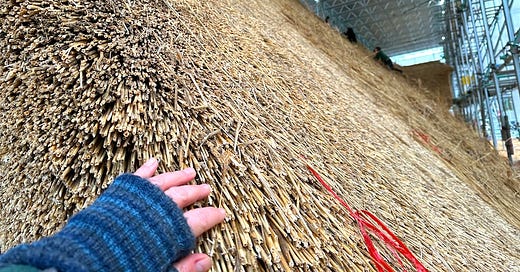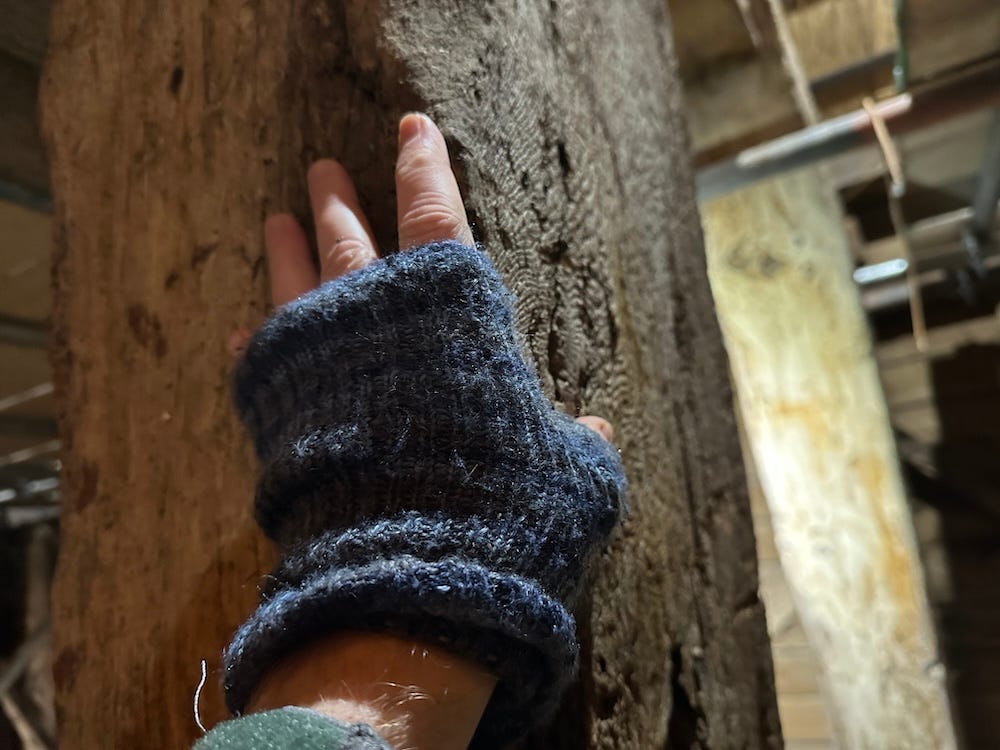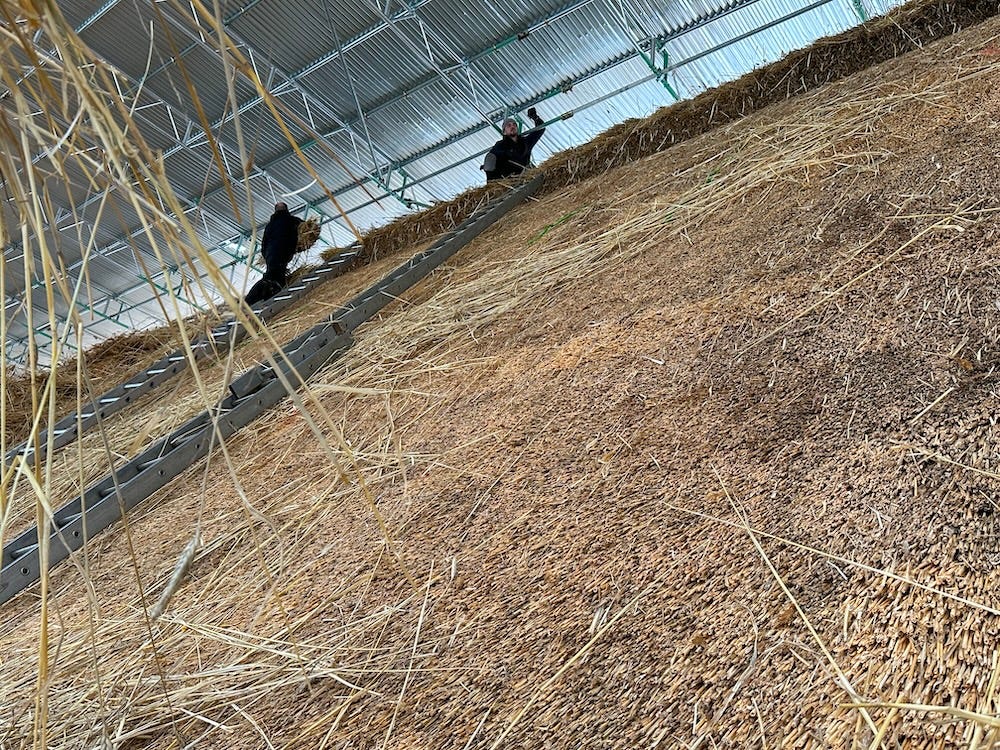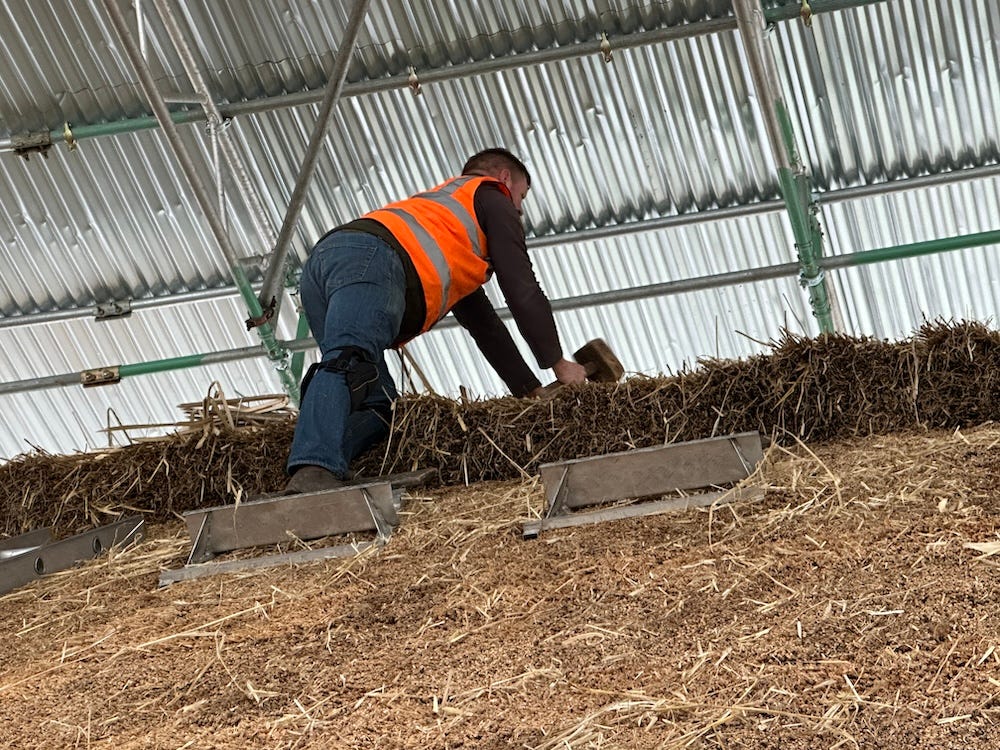Welcome to Londonist: Time Machine’s Friday edition for paying subscribers, with a generous teaser for everyone else.
It’s not your typical London rooftop. This week, I climbed a few wobbly ladders to witness the re-thatching of one of the capital’s oldest buildings, the Upminster Tithe Barn. That’s for the main section. First, the History Radar…
History Radar
Upcoming events of interest to London history fans.
🏳️🌈🏳️⚧️LGBT+ HISTORY MONTH: February is LGBT+ History Month, with walking tours, kids' events and all manner of other happenings in the capital. I’ll refer you over to Londonist.com for a full guide to events, though I’d recommend the tour of the LGBTQ+ archives at the wonderful Bishopsgate Institute.
💥 SOLDIER MAGAZINE: The official magazine of the British Army, Soldier celebrates its 80th birthday this year, an anniversary being celebrated in a free display at Chelsea's National Army Museum from 4 February. Learn about the publication's history, from its launch by Field Marshal Bernard Law Montgomery in 1945, to its world-spanning scope today.
✍️ DICKENS IN DOUGHTY STREET: This year marks the centenary of Bloomsbury's Charles Dickens Museum. It’s being marked by a special exhibition opening on 5 February. See Dickens' original manuscripts, personal letters and rare first editions, including some of the first objects acquired by the museum when it opened a century ago. As regular readers will know, I’m an obsessive Dickens fan, and I hope to feature some secrets of the museum in an upcoming newsletter.
⛪️ UNION CHAPEL TOUR: Also on 5 February, take a guided tour of Islington's Union Chapel, a Grade I listed Victorian Gothic chapel, which also houses an arts venue and a homelessness project. Hear about the building's history, including how it survived a wartime bomb, as well as near demolition in the 1980s. Churches can often take the breath away, but this place is truly stunning.
🪶 LATE NIGHT KEATS: On 6 February, Hampstead's Keats House stays open late for an evening focusing on the dangers of 19th-century life, including a talk by Dr Emma Marshall from the University of York, pop-up poetry and crafts. Sounds bleak, but it's inspired by the venue's current Hidden Histories of Keats House exhibition.
🔔 LITERARY CATHEDRAL TOUR: Celebrate author Charles Dickens’s birthday, with a special tour focusing on the literary figures associated with the Southwark Cathedral. Find out how Dickens, Chaucer and Shakespeare are all linked to the cathedral.
🌾 WINTER WASSAIL: On 8 February, get yourself over to Barnes to witness the Barnes Common Winter Wassail. Taking place at the Vine Road Recreation Ground, a Wassail Master oversees a session of storytelling, crafts and singing, in keeping with the traditional rural celebration to hope for an abundant crop in the coming year.
Reed All About It: London’s Largest Thatched Roof
I have never leaned against such a wizened post. This gnarled upright and its ligneous comrades had already seen a full human lifespan when Henry VIII assumed his throne. By the time the Bard had drafted A Winter’s Tale, the Barn had tales of 160 draughty winters. This is a truly ancient place.
I’m up in the Upminster Tithe Barn in the London Borough of Havering. Its a big old medieval farm building, unlike anything you’d see in the centre of town. The frame dates from 1450, or thereabouts, making it one of the oldest structures of any type in London1. Not without reason have Historic England granted it Scheduled Monument status, their highest level of protection. It’s also large. At 44 metres (144 feet) long and 11 metres (36 feet) wide, you could comfortably fit a couple of tennis courts in here.
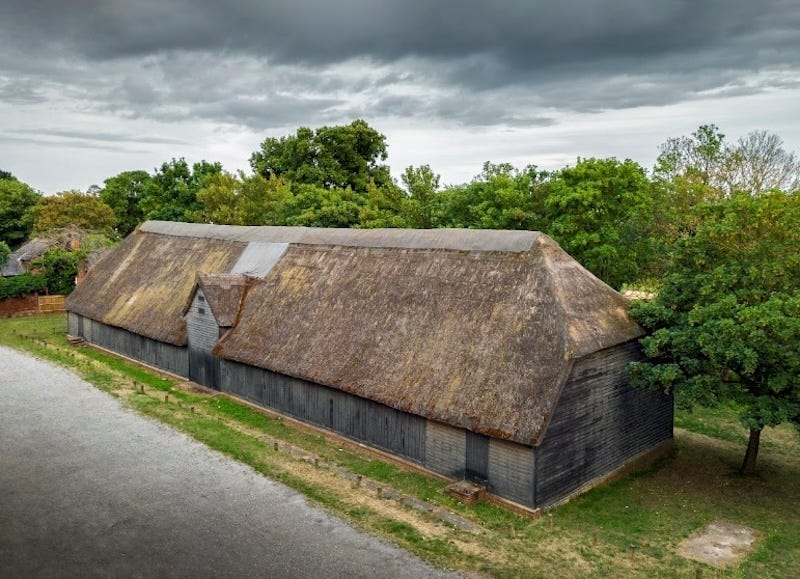
The barn started life in religious hands. It was part of the vast estates belonging to Waltham Abbey, an Augustinian house that stood many miles away to the north-west. Despite its name, the barn is not, strictly speaking a ‘tithe barn’. Such buildings were used for the storage of tithes — samples of farm produce given to a religious house as a form of tax. This one was never used for that purpose, so far as is known. I’m told that we should more properly call it a ‘grange barn’.
Waltham Abbey went the way of all abbeys under Henry VIII. Indeed, it was the last to be dissolved, in 1540. Part of its holdings, including Upminster barn, briefly fell into the hands of Thomas “Wolf Hall” Cromwell, before he too was dissolved by the axeman.
Cromwell never visited his barn, but thousands of people have. After centuries in agricultural use, it opened in 1976 as the idiosyncratic Museum of Nostalgia, a crowded exhibition of everyday items from the recent past.
After 600 years, the barn still stands strong. Its fat oak timbers have endured centuries and should last many more. But without vigilance, it is susceptible to damage from the elements. The building was briefly placed on the Heritage at Risk register in 2023 because of water intrusion through an increasingly bedraggled top. I’m here today to see the remediation work, which includes a complete rethatching of its mighty roof. Let’s climb up top…
Among the straw men
It takes 30 tonnes of water reed to fully cover the frame. 30 tonnes! That’s almost the mass of three double-decker buses, all of it supported on medieval timbers. I try not to think about this while walking along the eaves.
From up here, the roof does not look manmade at all, more like an agricultural field on a very steep hill. The reeds lie flat in an oblique carpet, with little evidence that they arrived in 11,000 separate bundles. I’ve stepped across more London rooftops than Dick van Dyke in my time, but never anything quite like this.
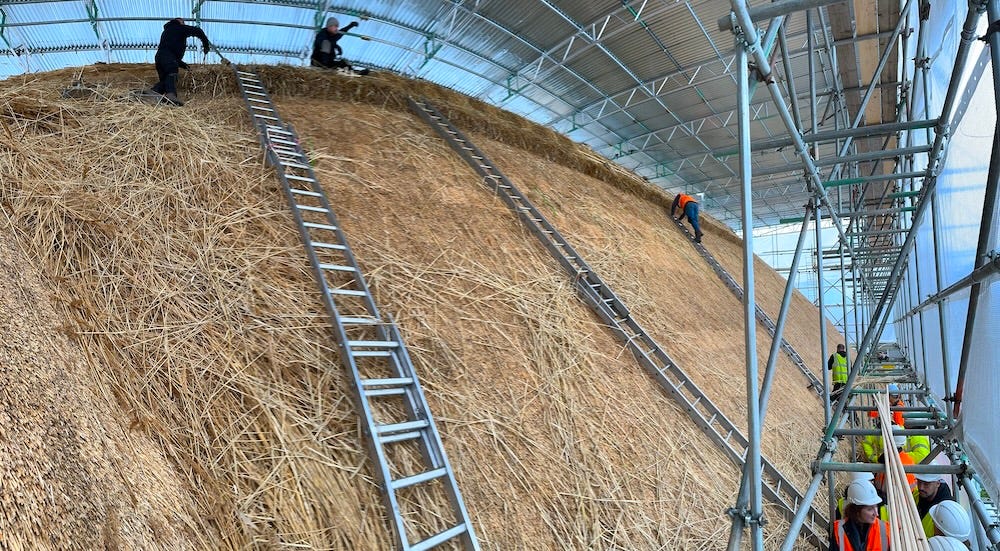
The reeds, incidentally, come from Turkey. Our wet British summer made for a poor reed harvest. Work had to start in late 2024 to fulfil the conditions of a grant, so the decision was made to import the materials.
Four master thatchers and two apprentices work together to accomplish the mammoth task. Their speed is prodigious. These photographs were taken on 28 January 2025; work began just over three weeks before, on 6 January. The whole roof has been covered in that time, and only the decorative ridge along the apex remains incomplete. The finished product should be good for another half century or more.
The tightly packed reeds are very good at keeping the water out. But this very property also makes them hard to compost. The discarded thatch from the outgoing roof will therefore be shredded and used as mulch in the flowerbeds of Havering.


